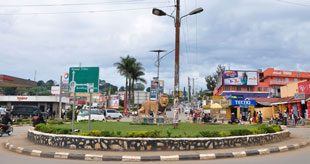
KAMPALA, UGANDA | THE INDEPENDENT | Health workers and human rights defenders have committed to expanding the use of new digital tools to improve access to treatment and information about Tuberculosis (TB) infections within communities.
The Association of Persons with Disabilities Living with HIV (ADIPHA-Uganda), a non-governmental organization in the Greater Masaka sub-region, has partnered with the regional TB and Leprosy control program coordination teams to leverage technology in curbing the spread of TB infections.
Nissy Namuyomba, the Programs Officer at ADIPHA-Uganda, stated that they have agreed to jointly promote the use of “OneImpact,” a new digital application designed to facilitate timely information sharing about TB, community-based monitoring of patients and suspected cases, and feedback exchange between health service providers and patients.
The mobile application is equipped with various modules that provide simplified information about TB. It links patients to care and treatment centers using a Global Positioning System (GPS) locator and allows users to report barriers to accessing care while supporting active engagement between affected individuals.
Namuyomba explained that they aim to encourage more people to download and install the app on their smartphones so they can regularly use it to share information and report any suspected TB cases within their communities, thereby prompting a timely response.
She emphasized that the new digital tool, developed by the Stop TB Partnership, addresses existing obstacles that hinder the treatment and management of TB, especially among persons with disabilities who face various structural challenges.
Namuyomba noted that their association has already deployed 46 peer community monitors across the Greater Masaka sub-region. These monitors will work directly with technical TB and Leprosy Control coordinators to facilitate the reporting of cases and improve access to treatment.
Caroline Namata, the Membership Development HIV/TB and Malaria Officer at ADIPHA-Uganda, added that the application is designed to serve users in both English and Luganda, ensuring effective communication.
In addition to community monitors, she mentioned that they are also engaging in-charges of various health centers within the sub-region, encouraging them to adopt the software to enhance their service delivery to patients.
Namata explained that there have been previous instances of poor adherence to TB medication among patients, including people with disabilities, due to various challenges. However, she remains hopeful that the new digital tool will help address these issues by facilitating experience sharing and prompt reporting by community peers.
Dr. Elizabeth Nyirazihaawe, the Greater Masaka Regional Supervisor of the TB and Leprosy Control Program, commended the application as a valuable asset in achieving the national strategic goal of ending TB by 2030.
She revealed that the Ministry of Health has expressed interest in the digital tool and plans to assess its effectiveness for potential nationwide rollout.
This initiative follows a recent surge in TB cases within the Greater Masaka sub-region, where 361 new patients were recorded in one week.
******
URN
 The Independent Uganda: You get the Truth we Pay the Price
The Independent Uganda: You get the Truth we Pay the Price



